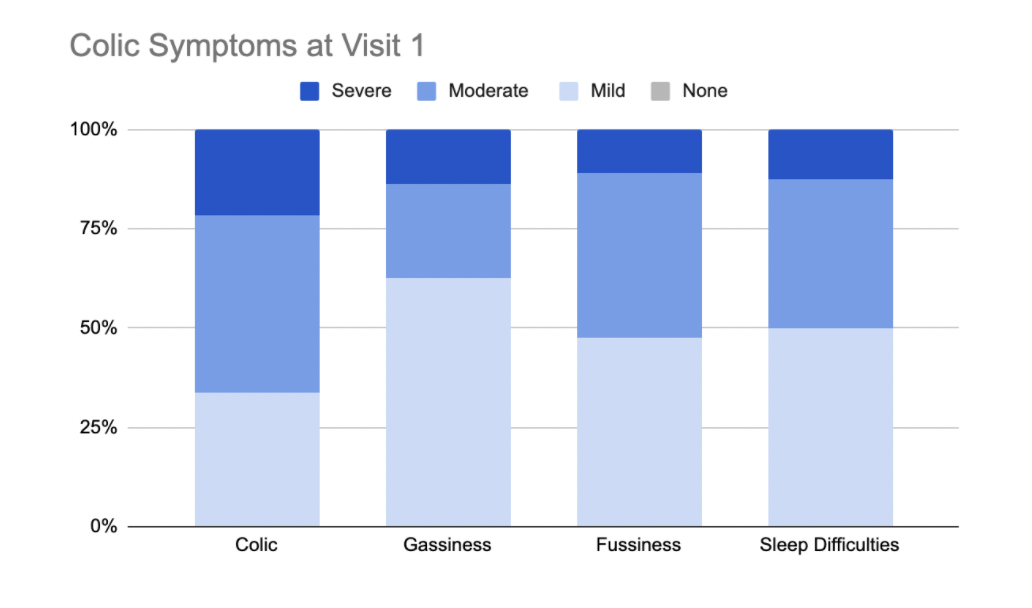Back
General Pediatrics: All Areas
Category: Abstract Submission
General Pediatrics II
601 - Amino Acid Formula Improves Infant Colic Symptoms at the First Follow-up Visit in Patients with Suspected CMPA: A Prospective Cohort Study.
Saturday, April 23, 2022
3:30 PM – 6:00 PM US MT
Poster Number: 601
Publication Number: 601.209
Publication Number: 601.209
Jerry M. Brown, Johns Hopkins All Children's Hospital, New port Richey, FL, United States; Kathryn M. Kimsey, Johns Hopkins All Children's Hospital, Tampa, FL, United States; Grafton S. Barnett, Johns Hopkins All Children's Hospital, Harvest, AL, United States; Lea V. Oliveros, Johns Hopkins All Children's Hospital, Saint Petersburg, FL, United States; Michael J. Wilsey, USF Health Morsani College of Medicine, St. Petersburg, FL, United States

Jerry M. Brown, II
Student Researcher
Johns Hopkins All Children's Hospital
New port Richey, Florida, United States
Presenting Author(s)
Background: Functional disorders of infancy, such as colic, irritability and sleep disturbances, have been associated with cow’s milk protein allergy (CMPA) (1) Infant colic affects up to 20% of infants in the first 4-6 months of life, and may be associated with food allergies (2). Evidence suggests eliminating food allergens (e.g., cow’s milk, eggs, fish, peanuts, soy, tree nuts, wheat) from breastfeeding mothers’ diet may relieve colic symptoms (3,4)
Objective: Studies evaluating amino acid formula (AAF) in the treatment of infant colic are lacking, though the use of partially hydrolyzed formula has shown promise (5,6). We sought to determine the efficacy of infant colic symptom relief in infants < 6 months of age with an AAF.
Design/Methods: This is a prospective cohort analysis of de-identified survey data obtained from healthcare providers (HCP) treating 107 patients < 6 months of age with symptoms of CMPA. Demographic data and baseline symptoms were collected via ZS Moments, a mobile app on an electronic device, by HCP. Colic CMPA symptoms scored by severity from 0 to 3 (none, low, moderate, severe) at the first visit and were then started on an AAF. Patients were reevaluated at follow-up to assess for changes in symptom severity and symptoms scoring was repeated. Patients who discontinued or switched treatments were included in the overall sample but excluded from symptom analysis. Only patients with a given symptom at the first visit were included in percentage calculations.
Results: Of 107 patients identified, 104 (97%) were included for symptom analysis. 55% were male and 50% had a family history of atopy. Most (~3/4) were newly diagnosed with CMPA, the majority (93%) were diagnosed by clinical assessment, and ~2/3 were seen in follow-up within 3 to 5 weeks.
Symptom improvement was consistent across different follow-up visit durations between visit 1 and 2. Symptoms assessed were colic (n=83; 81%), gassiness (n=72; 71%), fussiness (n=66, 65%), and sleeping difficulties (n=58, 57%). 75% of those with colic and 56% with gassiness reported improvement at follow up. 48% reported improvement of sleeping difficulties and 53% reported improvement of fussiness. Patients also reported improvement of GI and allergic symptoms of CMPA.Conclusion(s): Preliminary secondary analysis of prospectively collected survey data suggest improvement in infant colic symptoms in patients < 6 months of age with suspected protein allergy treated with AAF. Further analysis and age stratification is needed.
Percentage of Patients Reporting Improvement of Colic Symptoms at Visit 2
Colic Symptom Severity at Visit 1
Objective: Studies evaluating amino acid formula (AAF) in the treatment of infant colic are lacking, though the use of partially hydrolyzed formula has shown promise (5,6). We sought to determine the efficacy of infant colic symptom relief in infants < 6 months of age with an AAF.
Design/Methods: This is a prospective cohort analysis of de-identified survey data obtained from healthcare providers (HCP) treating 107 patients < 6 months of age with symptoms of CMPA. Demographic data and baseline symptoms were collected via ZS Moments, a mobile app on an electronic device, by HCP. Colic CMPA symptoms scored by severity from 0 to 3 (none, low, moderate, severe) at the first visit and were then started on an AAF. Patients were reevaluated at follow-up to assess for changes in symptom severity and symptoms scoring was repeated. Patients who discontinued or switched treatments were included in the overall sample but excluded from symptom analysis. Only patients with a given symptom at the first visit were included in percentage calculations.
Results: Of 107 patients identified, 104 (97%) were included for symptom analysis. 55% were male and 50% had a family history of atopy. Most (~3/4) were newly diagnosed with CMPA, the majority (93%) were diagnosed by clinical assessment, and ~2/3 were seen in follow-up within 3 to 5 weeks.
Symptom improvement was consistent across different follow-up visit durations between visit 1 and 2. Symptoms assessed were colic (n=83; 81%), gassiness (n=72; 71%), fussiness (n=66, 65%), and sleeping difficulties (n=58, 57%). 75% of those with colic and 56% with gassiness reported improvement at follow up. 48% reported improvement of sleeping difficulties and 53% reported improvement of fussiness. Patients also reported improvement of GI and allergic symptoms of CMPA.Conclusion(s): Preliminary secondary analysis of prospectively collected survey data suggest improvement in infant colic symptoms in patients < 6 months of age with suspected protein allergy treated with AAF. Further analysis and age stratification is needed.
Percentage of Patients Reporting Improvement of Colic Symptoms at Visit 2

Colic Symptom Severity at Visit 1

